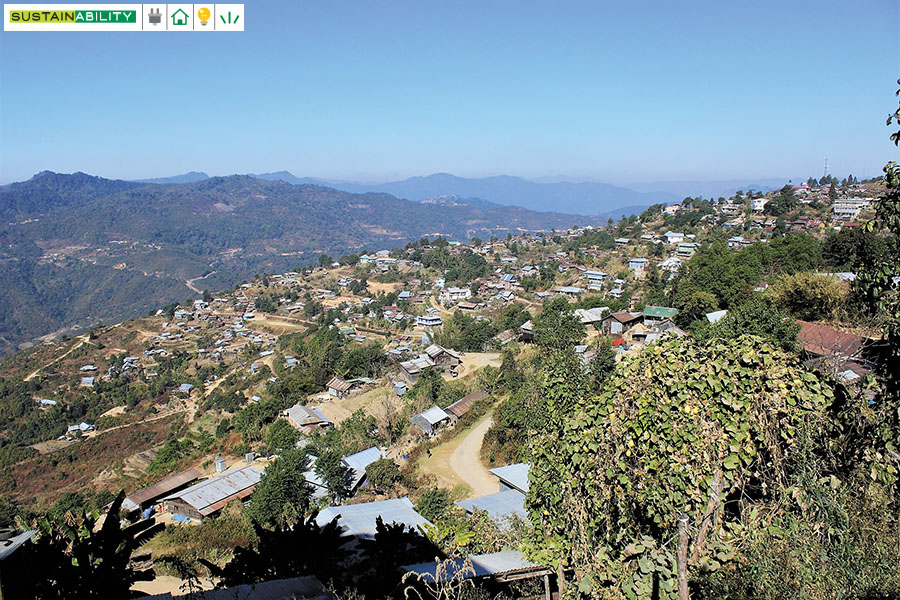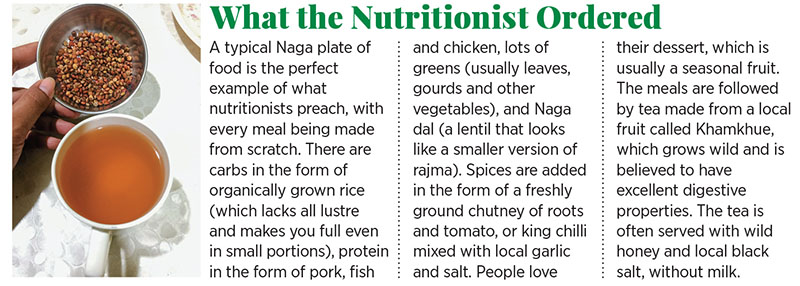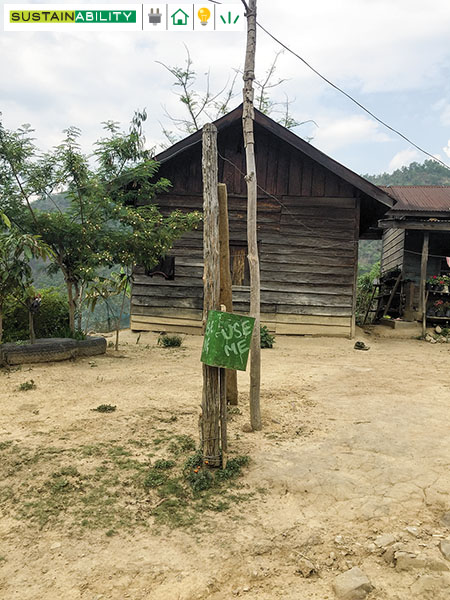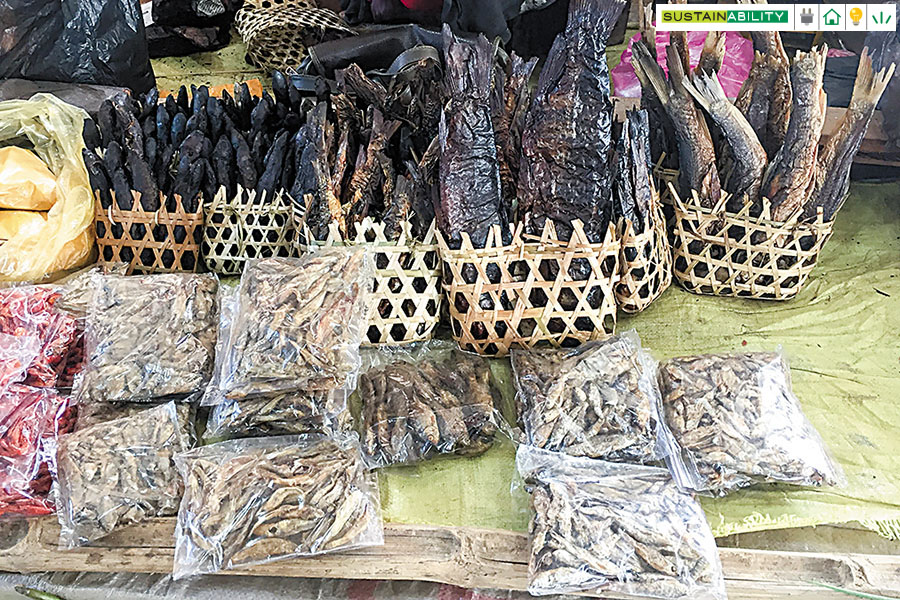
How a remote district in Manipur is taking sustainability beyond lip service
Home to an ethinic group called Tangkhul Nagas, Ukhrul showcases the tribe's immense sense of community and deep regard for humanity and the environment, often missing in cities
 The Ukhrul district in the north of Manipur is home to the Tanghkul Nagas
The Ukhrul district in the north of Manipur is home to the Tanghkul NagasImage: Shutterstock
The World Wildlife Federation (WWF) simplifies sustainability as: “Meeting our current needs without compromising the ability of future generations to meet theirs.” They elaborate further by breaking down the approach to sustainability into environmental, social and economic segments: “Environmental sustainability involves keeping the planet’s ecosystems diverse and productive through good resource management, while social sustainability focusses on areas such as social equity, health equity, community development, human rights, labour rights and social justice. Economic sustainability relates to the social and ecological consequences of economic activity.”
Most people that I meet socially or professionally focus on areas of food, energy, and waste. Although the environmental aspect of sustainability is far more worked upon, written and talked about, the critical link to it is more human-centric (social) aspect, while there is a need to also work on responsible businesses.
Social equity and justice, inclusion and equal rights for all can’t be a mere token conversation that fails to move beyond policy and administration. I meet businesses who mean to do well with their corporate social responsibility (CSR) funds but often get stuck in the rhetoric of quantifying output with parameters that are far more rigid than dynamic and closer to ground realities. The effort to make up for the negative impact businesses have on environment and society is often reactive and a result of a system, product or process design that ignores the consequences.
While we jostle through all these, there are people in our very own country for whom sustainability is not a trend or table talk but a way to survive, dwell and prepare for a better future for the young. One such example is the hill district of Ukhrul, in the north of Manipur, which is home to an ethinic group called Tangkhul Nagas.
My first trip there was inspired by my friend, Ringyuichon Vashum (a fellow recipient of the 2016 Nari Shakti Puraskar, India’s highest civilian award for recognising the achievements and contributions of women) who is the director of Ukhrul District Women Institute of Microcredit (Udwim), an initiative of the North Eastern Region Community Resource Management Project and government bodies. For the last 12 years, she has been working towards creating a movement of economic empowerment and social equality for the women of the hills. My plan was to live with these women, understand their feats and challenges, and prepare solutions for their digital inclusion, and increased access to resources.
The trip took me to some of the remotest villages in India, where all shortages come to life—water, electricity, education, health care. And yet the unwavering spirit of the communities, especially women, left me feeling more hopeful and grateful than ever.

The Naga way of life is everything that each one of us should follow every day, without pricey celebrity nutritionists or Instagram influencers telling us how to do so. The day in a typical Naga household starts at 4 am; by 5.30-6 am, breakfast—usually a cup of tea and a fruit, mostly the widely-grown banana—is done with; lunch is at 9 am. What is surprising is that despite it being so early, you do not feel very hungry for a good six to seven hours, by which time dinner is ready. The secret: Organic or naturally grown food.
Although women farmers sell fresh produce from local farms at the markets, it is normal for families to have most of their produce growing in the backyard. There are no growth boosters, no pesticides, and no synthetic fertilisers; just simple old ways of natural farming.
The bananas and vegetables look different, and would pale in front of the bright yellow bananas and shiny apples of Mumbai. But when you get past appearances and take your first bite, the taste introduces you to a fruit that is how it should be.
All villages here are free of plastic and littering, since there is a dustbin tied to a tree in front of every home. Shopping is done in bamboo baskets, raincoats are made from bamboo, and now there are fashionable versions of these products made from the same grass. The concept of ‘zero food waste’ is omnipresent. No produce from the kitchen garden or farms is wasted. I was astonished to see that once, when I was served a pumpkin stew, its leaves were turned into a boiled salad.
The day ends by 10 pm, and the lack of street lights and scattered homes give you a chance to see a clear starry sky.
*****
The Tangkhuls are hardworking, God-fearing people with an immense sense of community. Prayers are never uttered without wishing for the well-being of neighbours and the village; a pig is not sacrificed for a meal unless there are enough people to eat it, and nothing is wasted. The consumption of every resource—sunlight, food, wood, fish and fruits is done with the consideration that others are also dependent on them. The deep sense of humanity for one another and the environment—often missing in cities—is overwhelming.
 With dustbins tied to trees in front of each home, Ukhrul is litter and plastic-free
With dustbins tied to trees in front of each home, Ukhrul is litter and plastic-freeImage: Reema Sathe
Jobs are rare, making agriculture and rearing livestock the next main sources of livelihoods. Women often tend to the farms and are finding new sources of income, thanks to Ringyuichon’s micro-credit organisation Udwim, through fishing, piggery and making value-added products like juices, candies, smoked GI chilies and handicraft. Through this economic empowerment, they are now taking leadership roles in village administrative associations, building micro-businesses and sending their children to school.
 Women traders running the district’s local market use bamboo baskets to wrap smoked fishes
Women traders running the district’s local market use bamboo baskets to wrap smoked fishesImage: Reema Sathe
The list of difficulties is endless, but people have found their own sustainable ways of living and hoping for a better future for their children. My trip left me with many unanswered questions. The conversation on deforestation made me think about my own role in contributing to this issue. Did the villagers have to cut so many trees if I didn’t buy my wooden bed and sofas and wardrobes? What if I was using less or no paper, and digitising all my communications and transactions? Who is to blame: The man who cuts wood to make a meagre living, or my own mindless consumerism?
In our busy lives, we often forget that for every resource that we consume, there is an equivalent amount of resource that is snatched away from someone in a village. For every shower we take, someone is deprived of drinking water. For every furniture and paper items we buy, areas the size of a football field is cleared of trees. Is there a way to better manage our consumption and practice restraint in our daily life? Can businesses be more aware of the impact of their economic activities and find more innovative ways to include rural communities instead of treating them as CSR subjects?
It would perhaps be foolish of me to think I will find a solution to each one of these questions. But I can be more cognisant of my environment and society, and the effects of my work, and be aware that my comforts today come at the cost of an uncomfortable tomorrow.
The author is founder of Happy Roots, and winner of the 2016 Nari Shakti Puraskar; she builds business models that are community driven, empower marginal farmers and give equal opportunities to women.
(This story appears in the 21 June, 2019 issue of Forbes India. To visit our Archives, click here.)
Post Your Comment

















